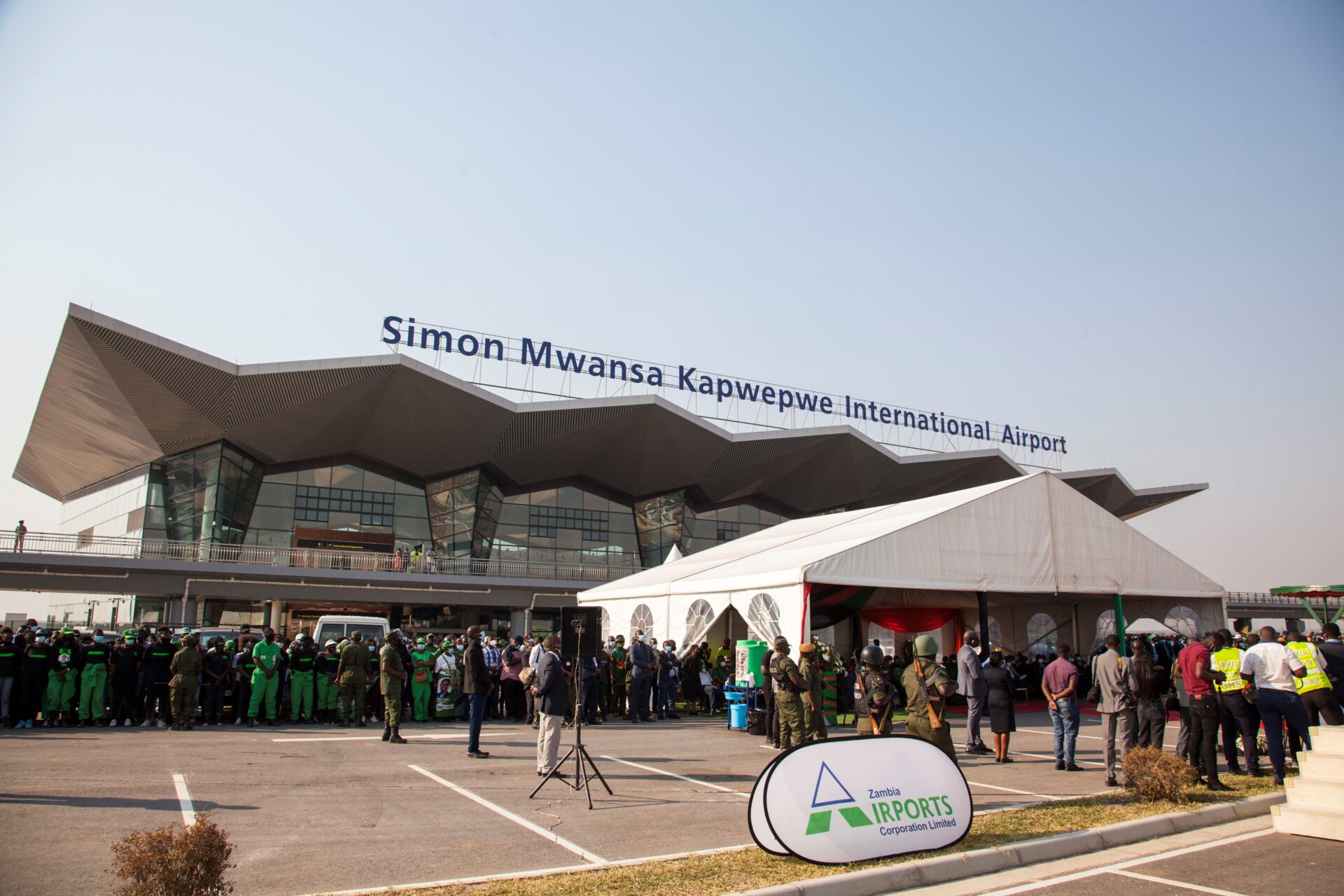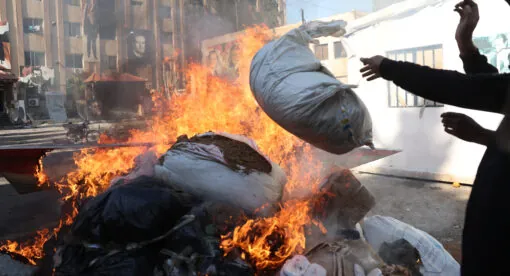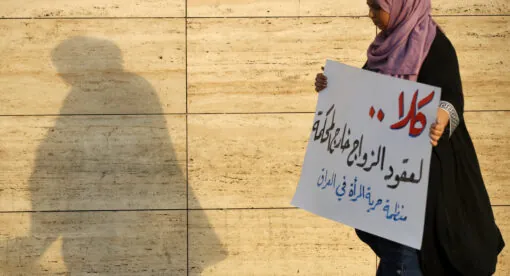The intensifying strategic competition between the West and China has found fertile ground in Africa. The legacies of Western colonialism, coupled with China’s increasing interest in strengthening its influence on the continent, has spurred global competition for strategic partnerships there. China has been transforming Africa through tactical use of Belt and Road Initiative (BRI) infrastructure investments to make inroads across the continent, including in Tanzania and Zambia, where China views its investments as vital to furthering its political and economic interests.
As China continues to strengthen relations with African countries through targeted BRI projects, the United States must provide an alternative by showing African partners that it is committed to their long-term development. Colonial resource extraction by Western powers has translated into contemporary neocolonialism that has left Africa plagued by a lack of long-term development and saddled with collapsing, colonial-era transportation infrastructure. Preoccupation with conflicts in other areas of the world has limited the capacity of Western governments to pursue substantial policy on Africa as China has made sizeable investments through the BRI, providing it with an opportunity to strengthen its influence. The growth of Chinese infrastructure investments is creating a new scramble for Africa with the West.
Although at face value, Chinese infrastructure investments appear to offer improvements for Africa, paying for them has burdened those countries with rising debt and an increasing economic dependence on China, allowing it to use the pretext of collecting collateral on infrastructure debt to extract mineral concessions. Western governments should be able to capitalize on the BRI-generated debt traps African countries find themselves in to encourage them to move away from China.
Thus far, Western attempts to counter the BRI through rival infrastructure projects, including the Build Back Better World Initiative (B3W), have failed to materialize due to a lack of financing and public backing. Instead of aiming to directly counter Chinese influence through competing physical infrastructure projects, Western governments should invest in more diverse development projects that directly benefit civilians, including technical and vocational education and training (TVET) programs and housing microfinance loans.
Africa’s Colonial Legacy
Africa’s history of European colonization has hindered its potential for long-term economic growth and explains the current underdevelopment of the continent’s physical infrastructure. During the period they had territorial control of Africa, Western colonizers exported rubber, gold, and other materials, draining the continent of resources that could have generated future wealth. This resource extraction went on to haunt African countries following independence since the new states lacked the financial resources to invest in infrastructure and their long-term development. Infrastructure across Africa collapsed due to a lack of financing for maintaining colonial-era transportation systems. Colonial resource extraction, coupled with poor institutions and a lack of good governance, continues to impede long-term development across the continent.
In the post-independence period, Western states are now engaged in neocolonialism, with their involvement in Africa focused on profit. American and European multinational corporations such as General Motors and IBM continue to extract industrial metals such as aluminum and cobalt from Africa for markets overseas, contributing to widespread poverty and hindering long-term economic growth since resource wealth is held for foreign corporations and not locals. Although the Global Fragility Act has re-engaged the U.S. in peacebuilding and violent conflict prevention in coastal West Africa, there is a lack of engagement on Africa’s infrastructure development, with development aid from U.S. and EU countries having fallen from 6 percent of Africa’s GDP in the 1990s to 2.5 percent in 2023. This disinterest stands in sharp contrast to China’s actionable infrastructure projects.
China has actively worked to evoke the memory of European colonialism to inspire anti-Western sentiment and promote its own partnerships with African countries. China’s messaging is that it was also once poor and exploited by colonial powers and that it was never engaged in imperialism in Africa, unlike European countries. Instead, it was involved in the 1960s decolonization of Africa by training the leaders of liberation movements in Angola, Tanzania, and Zimbabwe, and it quickly established diplomatic relations with those who embodied its authoritarian and communist ideologies. Although the U.S. never colonized Africa, China has used disinformation campaigns and propaganda to promote anti-U.S. sentiment while painting itself as a friend that has built high-speed trains and modern skyscrapers on the continent.
China’s Priorities in Africa
China’s Belt and Road Initiative offers countries extensive infrastructure development projects, including the construction of ports, railroads, government office buildings, and airport terminals. Since its launch in 2013, 52 of the 54 African countries have joined the initiative, including influential regional powers Nigeria, South Africa, and Egypt. For those countries, the BRI offers an attractive alternative to partnering with the United States and EU countries, which make aid conditional on democratization and human rights standards.
For example, in Zimbabwe, the EU and U.S. have imposed sanctions and withdrawn aid because of human rights violations. In response, the Zimbabwean government blamed Western sanctions for the country’s economic failures, fomenting negative associations of the West among its citizens. In contrast, Zimbabweans have a positive perception of the BRI, citing technology transfers and improvements to thermal and hydropower stations as well as airport upgrades. The conditions Western countries attach to aid have limited their influence in Africa, especially considering the rise of authoritarian and military regimes across the continent.
China’s strategic goal in Africa is to challenge Western supremacy on the international stage by presenting the BRI as an example of cooperation among Global South countries while identifying traditional North-South cooperation between the West and Africa as imperialistic. Through this narrative, China presents itself as a preferred development partner for Africa. China seeks to build relationships with previously nonaligned African countries caught between conflicting world powers and pull them into its sphere of interest, prompting them to promote Chinese foreign policy in international forums, notably the United Nations. China has demonstrated its influence by building a coalition of Global South countries that has leveraged its voting power to propose defunding human rights monitoring in U.N. missions and helped China win elections to lead four principal U.N. agencies.
China’s Successes in Tanzania
The U.S. views Tanzania as an important strategic partner in the fight against violent extremism in East Africa, given its position among numerous security threats including al-Shabab from the north and various Islamic State affiliates operating in the Democratic Republic of the Congo and Mozambique. The United States increasingly engaged in counterterrorism cooperation with Tanzania in 2022 to promote regional security, but the influence generated by these efforts has not matched that of China’s infrastructure investments. Tanzania’s domestic politics and governance have shied away from the United States, while China has continued its investments unabated.
After the death of autocratic President John Magufuli in March 2021, observers were hesitantly optimistic about potential democratic growth under new President Samia Suluhu Hassan. However, over the past two years, the government’s human rights violations have continued, with forced evictions of minority groups, violent attacks on protesters, and a continued ban on pregnant girls from attending school. During this time of political uncertainty, China has stepped in to fill the development void, with the BRI yielding major infrastructure improvements and discussions underway to revitalize the TAZARA Railway connecting Tanzania with Zambia, which would contribute to strengthened economic cooperation and trade. Although China has become a key partner for Tanzania, the U.S. must remain committed to strengthening its own relations with the country. Of the 48 sub-Saharan countries that receive U.S. foreign assistance, Tanzania currently ranks 11th. To provide an alternative to China’s BRI projects, it is essential that those funding levels continue.
Emerging Limitations of the BRI for African States
While the BRI appears to offer attractive development opportunities, the initiative has created challenges for African countries that have been unable to pay back the program’s high-interest loans and are now caught in a debt trap. Continued exploitation under neocolonialism in Africa has contributed to a wealth gap that contributes to some countries’ inability to make payments on Chinese infrastructure loans, forcing these states to borrow additional money. China, which rarely cancels these debts, has used debt traps to expand its influence over African countries by forcing states to restructure their debt with long-term repayment plans that cede mining and natural resource rights to China under the guise of collecting collateral for debt owed.
Nevertheless, African countries have continued to seek Chinese infrastructural investment money. In October, Beijing hosted its annual Belt and Road Forum, where President Xi Jinping announced $100 billion of new funding for physical infrastructure and green energy projects. The attendance of leaders from Kenya, Ethiopia, Nigeria, and the Republic of the Congo signals that many African states continue to prefer working with China to Western countries. Across the continent, there continues to be a positive perception of China because of its willingness to sponsor infrastructure projects in any African country. However, there is also concern among Africans that their governments are too deeply indebted to China. This widespread concern can provide an opportunity for the United States to engage with the continent and provide an alternative form of development that does not create a debt burden.
China’s Debt Trap Diplomacy in Zambia
Zambia is the third-largest African recipient of Chinese foreign direct investment, with major improvements to its transport infrastructure including roads and railways under the BRI. In 2020, however, the debt strain led Zambia to become the first African nation to default on its international debt as the COVID-19 pandemic took hold. It signed a debt restructuring deal in October. Zambia has nonetheless continued to support strengthened bilateral relations since China continues to offer Zambia funding for its long-term development ambitions, including its desire to transform into an industrial hub by leveraging profits from its mineral endowments, primarily copper. However, Zambia is the second-largest source of mineral exports to China, so mineral wealth is concentrated in Chinese firms, and profits are not beneficial to Zambians. Under this arrangement, Zambia’s debt to China will continue to grow, allowing China to continue profiting from Zambian minerals.
Mineral exports in Zambia could be an aspect of Chinese competition with the U.S., which signed a memorandum of understanding with Zambia in December 2022 to extract minerals for the development of electric vehicle batteries. Zambia’s position between China and the United States makes it essential for Washington to demonstrate its active engagement in Zambian development by proposing targeted projects that benefit ordinary citizens.
Policy Recommendations for Countering the BRI
African countries not embroiled in conflict are looking toward long-term development, but Western governments are not backing projects on the same scale and unconditional basis as China offers through the BRI.
Previous policy alternatives such as the B3W that directly competed with China’s extensive and well-established BRI efforts in Africa had difficulty gaining traction or financing. Instead of trying to directly counter Chinese infrastructure projects, Washington should prioritize localized development projects, including those that improve education and living conditions. While the BRI has successfully fostered infrastructure improvements to airports and railroads, some projects have displaced residents who were not consulted during the planning stages.
Technical and Vocational Education and Training
Quality and specialized education is essential for Africa, where the median age of 19 marks it as the world’s youngest. It faces a growing problem of youth disillusionment, with one in four young people neither employed nor receiving education or training. BRI projects have not transformed African education or reduced unemployment there since companies import Chinese labor instead of employing or training locals.
This creates an opportunity for Western countries to prioritize job creation on the continent through increased funding for TVET programs, which teach youths skills that prepare them to enter the workforce. These programs should target education inequality given the general lack of access among the poor and high rates of school dropouts among girls. Although the World Bank and UNESCO have made strides in promoting TVET programs, their implementation has been limited. Furthermore, only 3 percent of U.S. aid to sub-Saharan Africa in the fiscal year 2024 budget is earmarked for education. While additional funding is needed to bolster education in Africa, it also must be targeted to ensure it is spent on effective TVET programs to reduce unemployment and poverty and not wasted.
Housing Microfinance Loans
African heads of state have touted the success of the BRI in upgrading their public infrastructure, but these projects have had limited benefit for people whose housing infrastructure has not received the same support. In Sub-Saharan Africa, between 97 and 99 percent of citizens cannot access formal financing channels, with many in unhoused communities lacking physical infrastructure. The U.S. Agency for International Development should expand financial support to housing microfinance institutions that offer flexible repayment plans to ensure that borrowers can pay back loans and prevent them from falling into debt.
In Tanzania, where the annual housing deficit is more than 3 million units, persistent poverty has created a problem of homelessness in both rural and urban areas. Housing microfinance in Tanzania has targeted home construction and improvements to sanitation by helping half of the Tanzanian population gain access to loans that traditional financial institutions would not award because the applicants lacked formal employment. It is through support for these loans that the U.S. can make clear its intentions to support Africans and stand in sharp contrast to Chinese projects that have bypassed supporting citizens.
It is essential for the U.S. to prioritize Africa and support its long-term development by offering targeted alternatives to Chinese development projects. In 2023, top officials in the Biden administration traveled to the continent, including Vice President Kamala Harris, who visited Ghana, Tanzania, and Zambia in March. While these meetings are a step forward in strengthening relationships with African countries, Washington must continue these engagements and deliver actionable development investments to show that it is committed to building valuable long-term partnerships on the continent.
Jessica Malobisky is a graduate student pursuing a master’s in International Development Studies at The George Washington University. Her interests are in the impact of conflict on civilians, including the need for long-term solutions to humanitarian aid and forced displacement throughout sub-Saharan Africa and the MENA region. While obtaining her bachelor’s degree at The George Washington University, Malobisky interned with Multifaith Alliance as a Policy and Advocacy Intern. In this role, she studied the conflict in Syria, conducting research on the illicit captagon trade and cross-border interdictions in Jordan and Lebanon. She also studied the migration of Syrian refugees throughout the region.
The views expressed in this article are those of the author and not an official policy or position of the New Lines Institute.






